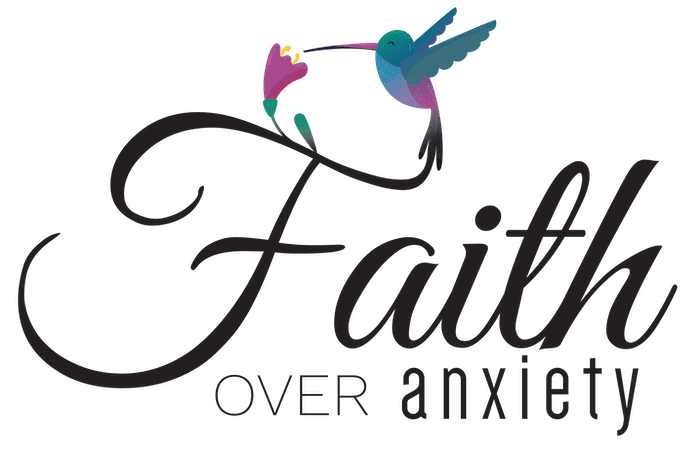From stress to insomnia to general anxiety, panic attacks, and anger… deep breathing is a crucial component of strong mental health and emotional regulation. When you don’t know how or when to take deep breaths, life is seriously much harder than it needs to be.
Don’t underestimate the power of deep breathing when it comes to your mental health!

Here’s why.
As you inhale, you activate your sympathetic nervous system, which is associated with helping the body respond to stress and danger. This system sends chemicals to the brain, heart, and muscles to gear up for a threat. When you breathe in, you are intentionally increasing your heart rate.
As you exhale, you activate your parasympathetic nervous system, which is pretty much the opposite of the sympathetic nervous system. It’s associated with getting the body in rest mode by activating digestion, relaxing muscles, and decreasing your heart rate.
When you breathe deeply, you are consciously creating a rhythm between your sympathetic and parasympathetic nervous systems. You are syncing your heart rate with your breath and forcing your body and brain into a balanced and relaxed state.
The fancy term for the heart rate/breath connection is heart rate variability.
When our sympathetic and parasympathetic systems are constantly out of sync, our mental health suffers, and we stay in negative, unproductive places longer than we should.
Our work suffers. Our relationships suffer. Our decision making skills suffer. Our health suffers.
Everything suffers.

But when we learn to regulate our breathing, we’re essentially learning how to regulate our lives. Breathing might even be more important to our mental health than food or water. Of course, you have to eat and drink to stay alive, but hopefully, you get my point: Deep breathing is key.
In one of the most widely celebrated books on trauma, The Body Keeps the Score, by Bessel van der Kolk, he says that “scientific methods have confirmed that changing the way one breathes can improve problems with anger, depression, and anxiety.”
So when should you do deep breathing?
The simple answer is just whenever you’re experiencing a negative emotion or having a panic attack. But is this really sufficient? I don’t think so.
I believe in being proactive.
By scheduling deep breathing meditations throughout each day and practicing mindfulness, you can lessen the severity of negative emotions before they’re even an issue. You can help keep chronic issues like depression at bay.
Research has shown that regular meditation and mindfulness weakens the parts of the brain associated with stress and anxiety and strengthens the parts associated with learning, compassion, and empathy.
Literally, certain parts of your brain shrink and other parts grow.
This is great news for anyone suffering from an anxiety disorder, debilitating stress, depression, or trauma.
Instead of giving unnecessary attention to irrational fears and unsubstantiated worries, your brain can actually focus on learning, achieving, and being productive.
And your relationships (which is another vital crux of strong mental health) will also benefit. When you’re anxious, stressed, or depressed, you’re more likely to be irritable, to snap, and to lash out at the people closest to you. And that further isolates you and doesn’t help your case.
For more detailed information on exactly how regular mediation changes the brain, check out this article from Mindworks.
I would suggest incorporating a guided meditation or yoga session into your morning routine, right before you start work. You may even set an alarm on your phone to remind yourself to meditate for a few minutes every three hours until it becomes a habit.
At night, you can do a deep breathing exercise as you take a bath or lie in bed. Bedtime is also a good time to experiment with nighttime essential oils related to sleep.
What types of deep breathing exercises can you do?
There are actually a lot of different techniques I’m coming to find out. I’m only going to list four here because I think it’s much easier to experiment with four techniques for a while than to try and learn ten. But in case you’re extra curious, you can check out more breathing techniques here.
- Alternate Nostril Breathing – This is one I like practicing throughout the week and especially at night. My best friend taught it to me a little while ago, and it’s great! The left nostril triggers the parasympathetic system, and the right triggers the sympathetic system. It’s used to reduce stress and anxiety and improve heart function.

Take your right thumb and cover your right nostril, and breathe in deeply through your left nostril.
While holding the inhale, take your index or pointer finger and cover your left nostril, then exhale through your right nostril.
Without moving your finger, inhale through your right nostril. Hold the inhale, switch and cover your right nostril, and exhale through your left nostril.
That’s the basic rhythm of Alternate Nostril Breathing. For deeper relaxation, try extending the inhales and exhales from the left nostril.
Take about three breaths right now to see how it feels!
- Equal Breathing – This type of breathing is pretty straightforward and aims to create balance and harmony. It gives equal attention to the sympathetic and parasympathetic systems, so it’s good to do throughout the day. Pick a count – 4,5 or 6 seconds – and balance your inhales and exhales by that count.
It’s best done in an upright seated position. Inhale through your nose for four seconds and exhale through your nose for four seconds. That’s it. Just close your eyes and breathe evenly through your nose.
At night, I like to lie down and place my hands on my stomach so that my fingertips touch.
When I inhale, the fingertips slightly separate, and I open my eyes. When I exhale, I close my eyes, and my fingertips meet again. This has helped me to drift off to sleep MANY nights.
- Diaphragmatic Breathing– This is also known as belly breathing. It’s good for relaxation at night or during the day and focuses on expanding and tightening the muscles in the abdomen.
Either lying down or sitting up straight, place one hand over your chest and the other on your belly. Breathe in slowly through your nostrils and focus on expanding your belly and keeping your chest still.
Exhale through your mouth while focusing on flattening the tightening your belly. Your chest should stay still the whole time.
- Unequal Exhale Breathing– This is something I do if I have panic attacks. It’s just like the name says. I extend the exhales longer than the inhales to activate the parasympathetic system for reduced heart rate and deeper relaxation.
Close your eyes and inhale for 4 seconds, and then exhale slower for 5 or 6 seconds. Hold your exhalation for a couple of seconds before inhaling again.
Hopefully, this helped you to find a deeper appreciation for deep breathing. It’s been a serious game-changer for me, especially in dealing with insomnia and panic attacks.
If you practice any other techniques that you swear by, please let me know in the comments below!
Sincerely,
Alexia





0 Comments
Trackbacks/Pingbacks